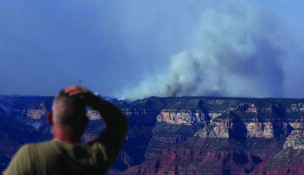ADOT changes policy on roadside memorials
Howard Fischer, Capitol Media Services//August 29, 2016//
Families looking to memorialize relatives killed on Arizona roads may no longer need to erect them in secret and fear they’ll be carted off by highway officials. In an abrupt...













































